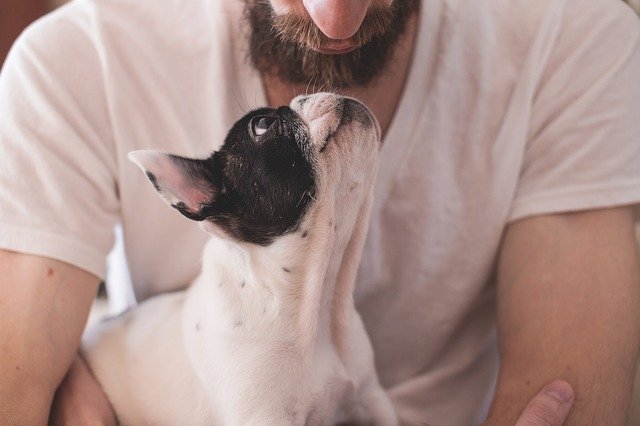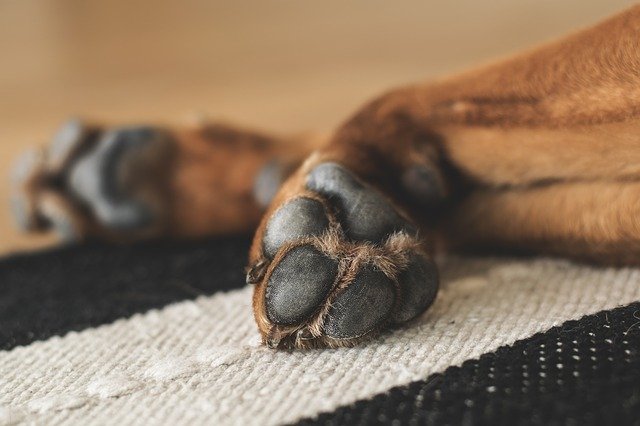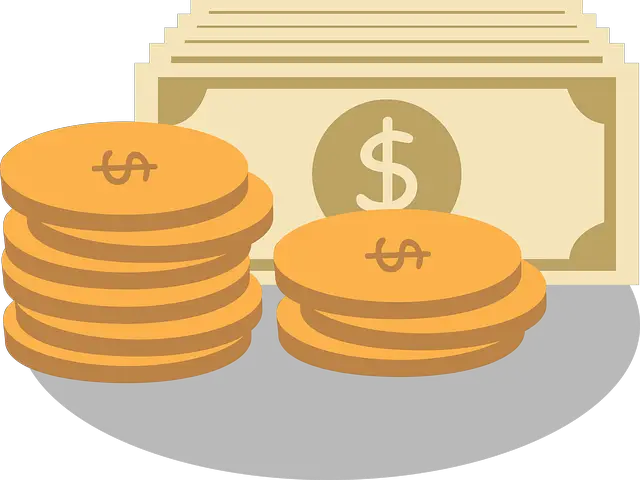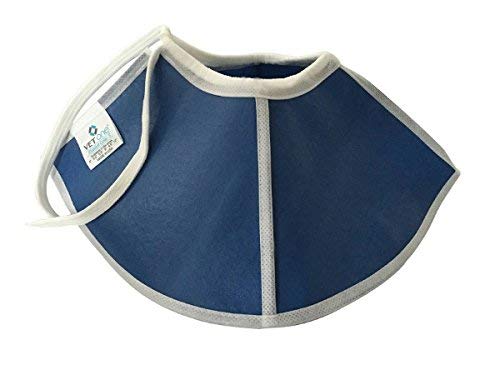
So it would appear people want to find out how to neuter a dog at home. This is quite disturbing, to say the least. Castrating your dog yourself at home is not just cruel, in some areas, it is even illegal. If you want to neuter your dog (and that’s okay) you should do the proper thing and take your dog to the vet.
Table of Contents
What Is Neutering?
Neutering is a pretty simple procedure that will sterilize your dog and render him incapable of having puppies. Some people call it the big snip. Whatever, you call it, neutering your dog (the proper way) has a number of health benefits. It not only keeps the dog population under control, it also reduces the chances of unwanted behaviors, certain kinds of diseases, as well as conflict with other dogs.
Neutering surgical procedures are actually quite simple. Your vet will simply put your dog under anesthesia, then make an incision in front of his scrotum. After that, he’ll cut the testicular stalks and then take out the incision through the incision made.
In some cases, the incision will have to be stitched and the dog will have to wear an Elizabethan collar (also called the cone of shame) while he’s recovering. This is to keep them from licking on the affected area. In two weeks, the wound heals, and your dog can go about his normal life again.
[amalinkspro type=”showcase” asin=”B000XY7CKE” apilink=”https://www.amazon.com/dp/B000XY7CKE?tag=dpg-amalinks03-20&linkCode=osi&th=1&psc=1″ new-window=”true” addtocart=”true” nofollow=”true” sc-id=”4″ imgs=”LargeImage” link-imgs=”false” specs=”Patented soft cone-shaped e-collar made with foam-backed padded nylon~~~Velcro closures for custom fit, reversibility & easy on-off~~~Removable plastic stays to add structure when needed~~~Water resistant/repellent & easy to wipe clean with soap and water~~~Veterinarian tested and approved~~~The Comfy Cone is an alternative to a plastic cone and as with any medical devices, please supervise your pet when they are wearing it. It’s best to purchase an authentic, new Comfy Cone for your pet. All Four Paws cannot approve of the condition or function of any Comfy Cone not purchased new and directly through an authorized retailer. Neck to Snout Measurements: 4.25 inches , Neck Size: 9.75-12.5 inches~~~” btn-color=”#ff9900″ btn-text=”View on Amazon” alignment=”aligncenter” hide-prime=”0″ hide-image=”0″ hide-reviews=”0″ hide-price=”1″ hide-button=”0″ width=”750″]The Original Comfy Cone, Soft Pet Recovery Collar with Removable Stays,Large 25 cm[/amalinkspro]
Why Should You Neuter Your Dog?
The following are top reasons (and benefits) for neutering dogs:
- Dog population control.
- Prevents grave diseases, e.g. testicular cancer.
- Reduces aggression in dogs.
- Makes dogs mark less.
- Reduces and sometimes, totally eliminates dominance-related issues in dogs.
- Fewer fights.
- Reduces the size of an enlarged prostate in senior dogs.
The number one benefit of neutering your dog is population control. We don’t want an overpopulation of pets that would become impossible to care for. Every year, in shelters, dogs are euthanized in their hundreds of thousands. So, it’s extremely important to neuter your dog.
While that is significant, there are still a few other reasons your dog should be neutered.
- Neutered dogs are less likely to come down with certain grave illnesses. Testicular cancer, for instance, is off the table and so are most prostate diseases.
- With less testosterone in the system, a dog is less likely to be aggressive. So, you might notice your dog is a lot calmer than before.
- Your dog will also mark less when neutered. Since he no longer has an incentive to announce his presence, the urge to mark automatically reduces.
- Neutering also reduces (or, in some cases, totally eliminates) dominance-related behaviors such as humping, roaming, and aggression.
Note that your dog might still want to hump. However, this is mostly to prove dominance not to reproduce.
- Dogs who are neutered get into fewer fights with other male dogs than dogs who aren’t.
- For seniors, neutering your dog will reduce the size of an enlarged prostate.
- Neutering your dog benefits male dogs whether they are still boys or are already seniors.
Now, please keep in mind that neutering only improves behaviors that are related to hormone levels. If your dog’s issues are training related, then whether or not those behaviors would improve have no relation with whether or not your dog is neutered or not.
So, while your neutered dog might not necessarily start chasing a bitch in heat after catching a whiff of her scent, if your dog is roaming because he’s untrained, he’ll continue to do that even after neutering.
That said, even though neutering has its advantages, it also has its disadvantages, although, thankfully, they are just a few.
Find out all the reasons you should consider neutering (and/or spaying) your dog in the video below:
What Are The Disadvantages Of Neutering Your Dog?
There aren’t any major disadvantages of neutering your dog. The risks come when your dog is put under anesthesia, and this risk is even really small compared to the huge benefits you’re set to reap. The worry that a dog might become lethargic and overweight after being neutered is also there in many dog owners’ minds. Nonetheless, if you give your dog the right diet and get him exercised, you shouldn’t have any problems with either of those.
(Click here to read our article on Weight-Loss Dog Food).
What Are The Dangers Of Using An Elastic Band To Neuter Your Dog At Home?
The dangers of using an elastic band to neuter your dog at home are as follows:
- High risk of mild to life-threatening infection.
- Self-inflicted injuries on and around the testicles.

The story is told of lab/put bull mix-breed called Rocky who was rushed into a vet clinic at Billings, Mont. The dog happened to be bleeding profusely and when the source of the bleeding was identified by the doctors, they were absolutely horrified.
Apparently, someone had tried to neuter their dog themselves at home. However, everything became worse quickly when the doctors discovered a rubber band. Their conclusion? The dog owner tried to neuter their dog by banding and “the dog, literally, chewed his testicles off.”
Yes, we had the same reaction too.
Banding, which involves, putting an elastic band around the top of each testicle in order to cut off blood supply to the testicles until they fall off, is quite dangerous for your dog as we saw in Rocky’s case. Here are some of the dangers of using an elastic band to neuter your dog at home.
1. Infections
One big risk of banding your dog to neuter him is infection. When dogs have an injury, they have the tendency to lick and/or scratch at the affected area. This habit often brings a number of complications with it and infections are at the top of the list.
Thankfully, most times, infections are quite mild. However, it’s still very possible that those mild infections develop into full-blown infections that could even become life-threatening.
Besides that, the infection could also spread around the body and cause more havoc, especially if your dog’s immune system is already compromised. By the time you have to treat this infection, in the end, you spend a lot more and the infection can also be very challenging to treat as well.
Self-Inflicted Injury
Banding your dog’s testicles can get really uncomfortable and painful for your dog. In fact, the pain becomes so much, your dog would, literally, do anything to get out of that pain. And like in Rocky’s case, some dogs might begin to chew on their testicles just to get some relief. That is just downright disgusting and cruel. So, please do the right thing by your pet and let a professional do the neutering.
When Should You Neuter Your Dog?

Now, it depends on why you want to neuter your dog. If the neutering procedure was planned all along, some vets might do this when they believe your dog is physically mature around 9 to 12 months of age. However, these days, dogs are usually neutered any time after they hit 8 weeks of age. There are some vets that still follow the 9 to 12 months rule, though. But, generally, 8 weeks of age seems to be the standard these days.
Now, a dog that is neutered before he enters into puberty will end up growing a bit bigger than other dogs neutered after puberty. If you wouldn’t want this, then you could wait till your dog is about 5 or 6 months before neutering him.
That said, if you’re castrating your dog for behavioral reasons, you might not see the need to neuter him until he is about 1 to 2 years old.
Nonetheless, your dog can never be too old to be neutered especially if there’s a medical need for it, such as a testicular tumor.
(Read more about this in our article: How Big Can A Dog Get? — Predicting Puppy Growth).
Please note, however, that dogs that are neutered at n adult age have a higher risk of running into complications during surgery. Same goes for dogs that are in poor health or are overweight.
None of this makes neutering impossible, though. Simply inform your vet on time about this so they can know how to manage your canine in the best way possible.
Check out the video below for more information on when to consider neutering your dog. The video also talks about spaying too.
When Should You Neuter A Dog With One Or Both Testicles Undescended?
When your dog is growing and developing, his testicles begin to move from inside his abdomen, downwards into his scrotum. By the time your dog is going for his vaccination at 2 months of age, both testicles should have descended fully and become visible. If you notice that, at 2 months, your dog’s testicles have not descended, you will have to consult your vet to check on that for you.
Dogs with one or both testicles not descended will have an increased risk of developing cancer later in life. So, for these dogs, castration is advised. As you might suspect, removing an “undescended” testicle will be more complicated than removing a descended testicle.
Before, During, And After Surgery

Before Surgery
What Should I Do Before My Dog’s Neutering Surgery?
- Your dog should be fasting since he’s going under anesthesia.
- Make sure your dog is sufficiently exercised.
- Above all, stick to your normal routine so your dog doesn’t get anxious.
Before your dog is operated on, your vet will want to make sure your dog is in a great place to have surgery. So, they will conduct a pre-surgical blood work which will be able to show them whether or not your dog might have any health condition that could interfere with a certain kind of anesthesia.
Usually, if your dog is young, healthy, and at the right weight, he shouldn’t have any problems. However, it’s still great to know where your dog is health-wise for future reasons.
The pre-surgical blood work is usually carried to check on kidney and liver function most especially. And these two organs are critical when we talk about anesthesia.
That said, just before the operation, for the sake of the anesthesia, your vet will tell you to keep your dog away from food for a few hours before the surgery. On an empty stomach, your dog is less likely to vomit from the anesthesia — something you seriously want to avoid as it is quite dangerous.
Besides fasting, you will also want to help your dog get sufficient exercise so that they can empty their bowels and their bladder.
Both of these aside, you want to stick to your normal routine as much as possible so your dog does not begin to feel anxious or anything.
Admission For Surgery
When you arrive at the vet clinic on the day of the surgery, your vet or vet nurse will check with you to be sure you understand what the process of neutering involves. They’ll also take any question you might have and answer them to the best of their knowledge.
Afterward, you will be asked to read and sign on a consent form for the procedure. You will also have to supply some contact numbers. It’s important to have these numbers as, sometimes, some things might need to be communicated to the dog owner before or during the procedure.
Administering The Anesthetic
Before the anesthesia is administered, your dog will first of all be weighed. This will help the vet or vet nurse determine the appropriate dose of anesthesia for your dog. If the blood test we talked about has not been done, your vet will carry that out and check the results before carrying on with the procedure.
If your vet discovers any abnormality, he’d discuss with you to confirm whether or not he should go ahead with the procedure. In most cases, your vet will go ahead with the operation and simply administer intravenous fluids as an extra precaution.
After this, your vet will administer a pre-med (usually a combination of different drugs) via injection. When he does this, your dog will begin to feel a little drowsy. The main reason for this pre-med is to make sure the pain relief to be administered after the procedure is effective.
Now, anesthesia can be administered in several ways. However, the most common way this is administered is by injecting the anesthesia into the vein of the front leg.
The commonly used drugs for anesthesia work really fast, however, they don’t last long. So, they usually put a tube into your dog’s windpipe so that they can pass oxygen and anesthetic gas to your dog while he is being operated on.
Anesthetic gas is passed to ensure that your dog always has a safe level of anesthesia in his body for as long as that is needed.
There are various kinds of equipment that are connected to monitor the flow of the anesthetic. Doing this requires a high level of skill, so only a qualified vet nurse can carry this out.
Besides the operating table and the anesthetic machine, there will be much-specialized equipment on ground as well. They might not necessarily be used but they’ll be there just in case anything happens.
After this, the site of the incision on the testicles will be prepped for surgery by thorough cleaning to make sure it is as sterile as possible.
During Surgery
How Is Dog Neutering Surgery Carried Out?
As your dog is being prepped for surgery so will your vet surgeon. They’d scrub up, put on sterile clothing (consisting of a hat, gloves, a mask, and a gown). All the surgical instruments must have been sterilized in advance and then they’ll be laid out in preparation for the operation.
The surgeon will make an incision on the skin in front of the scrotum, cutting through the different layers covering the testicle. Large blood vessels, as well as the spermatic cord, will have to be tied to allow for the removal of the testicle.
Afterward, the different layers are closed up using sutures. The sutures might be visible on the surface or they may be buried.
After this, drugs will now be administered to your dog as needed.
Now, as we said, earlier, if one or both testicles are undescended, then it could make the operation more complicated. Sometimes, a testicle is only partly descended. If this is the case, neutering is still similar to what we have described above. However, the skin incision will be done differently at a different location.
If the testicle is yet in the abdomen and not descended, then the incision is made on the abdomen. This procedure is a much larger procedure and recovery for your dog would usually take a longer time than regular neutering. Also, because these testicles are usually a lot smaller than normal, they can become hard to locate too.
After the operation, the vet nurse reduces the gas anesthetic and then your dog will begin to wake up. The surgeon and nurse will monitor your dog and take out the tube from his windpipe once he awakes to a certain degree.
Watch how a scrotal neutering surgery is performed in the video below. It also contains advice on neutering dogs as well as post-op information dog owners need to know.
After The Surgery
What Happens After Neutering Surgery?
When your dog is out of surgery, he will be put into a cozy kennel with soft bedding and then monitored closely for recovery. At first, your dog will feel really drowsy, sleeping for the most part of the day as a result of the anesthesia. You will only be allowed to take your dog home once your vet has confirmed that he is fully awake enough to stand and walk on his own.
How Should I Care For My Dog After Neutering Surgery?
You’d have to do the following to care for your dog after neutering surgery:
- Try to ensure he’s well-fed but don’t get anxious if he skips a few meals.
- Keep your dog from rigorous activity.
- Check on the wound regularly to make sure it’s healing.
- Go to your vet if the wound looks like it’s swelling.
- Get your dog an Elizabethan collar to keep him from licking his wound.
- Ensure your dog takes his medication.
- Prevent mating for a short period as your dog might still be fertile.
Your vet will give you full instructions on how to care for your dog after the surgery. So, please take those seriously. He will also give you instructions on when you can give your dog food and water.
For the first couple of days or so, your dog might not be so excited about food. If he does, don’t bother him. Missing a few meals won’t cause any irreparable damage.
Again, keep your dog from rigorous activity until your dog heals so the incision does not open.
What you’d be doing mostly is to check out the wound to ensure that it is healing. You’ll also have to keep your dog from licking the wound by getting an Elizabethan collar. If you notice any untoward reaction, you’d have to report to your vet immediately.
Now, since we mentioned that, it is important to note that it is not scrotum that is removed during surgery. So, when you look at it first, it looks like nothing changed especially if there was a bit of swelling after the procedure. With time though, the scrotum will shrink gradually. However, if the swelling looks a little abnormal, then you can always call and ask your vet for advice.
That said, make sure your dog takes his medication according to instructions as given by the vet. Pain relievers might be given in the form of tablets or liquid, depending on what your dog prefers. Antibiotics are not usually administered but might be administered if the dog proves to need it.
The stitches made on your dog’s scrotum should be removed in about 10 days. However, sometimes, the stitches are buried and dissolve themselves.
Please note that the effects of neutering might not be observed immediately, probably not until a few weeks after neutering has occurred. If the reason for neutering is to prevent breeding, please note that your dog might still be fertile for a bit of time after neutering. So, prevent mating as much as possible.
Generally though, in about 12 weeks, your dog should be completely normal again. For testicles that were internal, however, it might take a slightly longer time.
Check out these other helpful articles:
- Dog dental care — the complete guide to dog oral hygiene.
- Dog gates — keeping your dog safely contained.
- Large dog crates — choose his crate according to his size.
- Dog backpack — a complete guide to everything about dog backpacks.
- PetSafe Gentle Leader Collar — in-depth review.
- All Four Paws Comfy Cone Collar — full review.
What Are The Non-Surgical Methods Of Neutering A Dog?
There is a non-surgical method which you can use to neuter a dog. It involves using Zeuterin and this process takes less than 5 minutes. It is approved by the US Food and Drug Administration so you can have peace of mind.
Zeuterin contains zinc gluconate which is administered to the dog via injection. And yes, the site of the injection is going to be on the testicles. By doing this, you render the testicles unable to produce sperm.
Is this not going to hurt? Well, it doesn’t hurt. Interestingly, when this drug was tested, 90% of dogs did not even seem to realize they had been pierced by a needle probably because the needle used to administer this drug is really thin. So, your dog is unlikely to feel any pain besides the first pinch of the initial piercing of the needle.
By nature, zinc is a spermicide. As it kills the sperm, the dog’s body also blocks the tube which transports the sperm with scar tissue even as it absorbs and metabolizes the zinc gluconate solution. After a while, the solution disappears in the body, however, the effects of this drug are permanent.
How Do You Administer Zeuterin To A Dog For Neutering?
Administering Zeuterin is pretty easy to do and feels like a vaccine shot to your pet. Unlike with surgery, you might not have to clip the fur around the scrotum to administer the shot. However, the dog might have to be sedated slightly just for the purpose of restraining the dog.
There are no known complications with using Zeuterin and when there are complications, the effects are usually minor and short-lived. In a study conducted about the drugs, there were no complications observed in 40 dogs who were administered Zeuterin for more than two years.
Now, because “zeutering” does not exactly remove the testicles (they just shrink in size), dogs that are zeutered are either tattooed with a “Z” or microchipped to show they’ve been neutered. Nonetheless, testicles that have been zeutered have a different feel that your vet can discern if they are trained.
Please note that although using Zeuterin looks very simple, it should only be carried out in a vet clinic by a trained professional.
What Is The Difference Between Neutering And Spaying
Neutering is the removal of a male dog’s testicles. Spaying, on the other hand, refers to the removal of a female dog’s ovaries and uterus. Either way, the end goal is that the neutered or spayed dog is unable to breed. For female dogs that are spayed, because the ovaries and uterus have been removed, it eliminates her heat cycle. Hormone-related behaviors also reduce or cease altogether. The American Veterinary Medical Association (AVMA) warns, though, that this might not be true for every dog.
How Much Does It Cost To Neuter A Dog?
How much you’ll spend neutering your dog would depend on where exactly you live as well as the size of your dog. Typically, most animal hospitals will charge over $300 for the procedure. However, there are low-cost neutering programs that cost significantly less, between $45 to $135. How much you end up spending will, again, depend on your location.

Now, many times, the reason people resort to the cruel (and illegal) method of banding their dog’s testicles is because they can’t afford $300 for a surgical procedure. Fortunately, you don’t have to do that as there are literally hundreds of low-cost neuter and spay clinics available.
You can check out ASPCA or SpayUSA for searchable national databases for low-cost spa and neuter programs in your area.
On SpayUSA, you can even get vouchers to cover a part of your dog’s surgery cost at a participating clinic.
Now, low-cost does not necessarily mean low-quality. It also does not mean that your dog will not get the comprehensive care he needs. Most of these low-cost neuter and spay clinics still do a pretty good job with your dog. For your peace of mind, you can also ask for a breakdown of the costs charged you for the neutering so you can see what and what are included in the neutering procedure for your dog.
How To Neuter A Dog At Home — Related FAQs
Can You Neuter A Dog With A Rubber Band?
The technique of neutering a dog using a rubber band is called banding and it is cruel and you should never do that to your dog.
It involves tying a dog’s scrotum tight with a rubber band, thereby, cutting off blood and oxygen supply to the scrotum. After a while, the scrotum falls off. Again, please, never do this to your dog.
What Is The Best Age To Neuter Your Dog?
Generally, the rule of thumb is 9 months to 12 months of age. However, these days, 8 weeks seems to be the new standard. Most vets would neuter a dog anytime after 8 weeks old.
Can A Dog Be Neutered Without Anesthesia?
The only way a dog can be neutered without anesthesia is if you’re going the non-surgical route. The non-surgical route involves the injecting of Zeuterin into the scrotum of the dog to sterilize him.
This process does not require anesthesia and can be carried out on your dog at 3 months of age.
Is It Too Late To Neuter A Dog?
Neutering your dog does not have any upper age limit. So, technically, you can neuter your dog any time.
Nonetheless, the benefits begin to reduce the longer you wait to neuter your dog. So, even if there’s no upper age limit, you still need to act fast if you want positive results.
Do Male Dogs Change After Being Neutered?
Fundamentally, your dog’s personality does not change with neutering. However, you can expect a few behavioral changes like less marking, reduced aggression, getting into fewer fights, and less humping.
These changes will be experienced to varying degrees in different dogs.
Do Dogs Know They’ve Been Neutered?
Dogs will simply lose the desire to reproduce, as well as the capability to. Of course, you can also expect your dog to be a little groggy after surgery as well. However, as to whether or not they would know whether they’ve been neutered, dogs would most likely not know that anything has been done to them.



